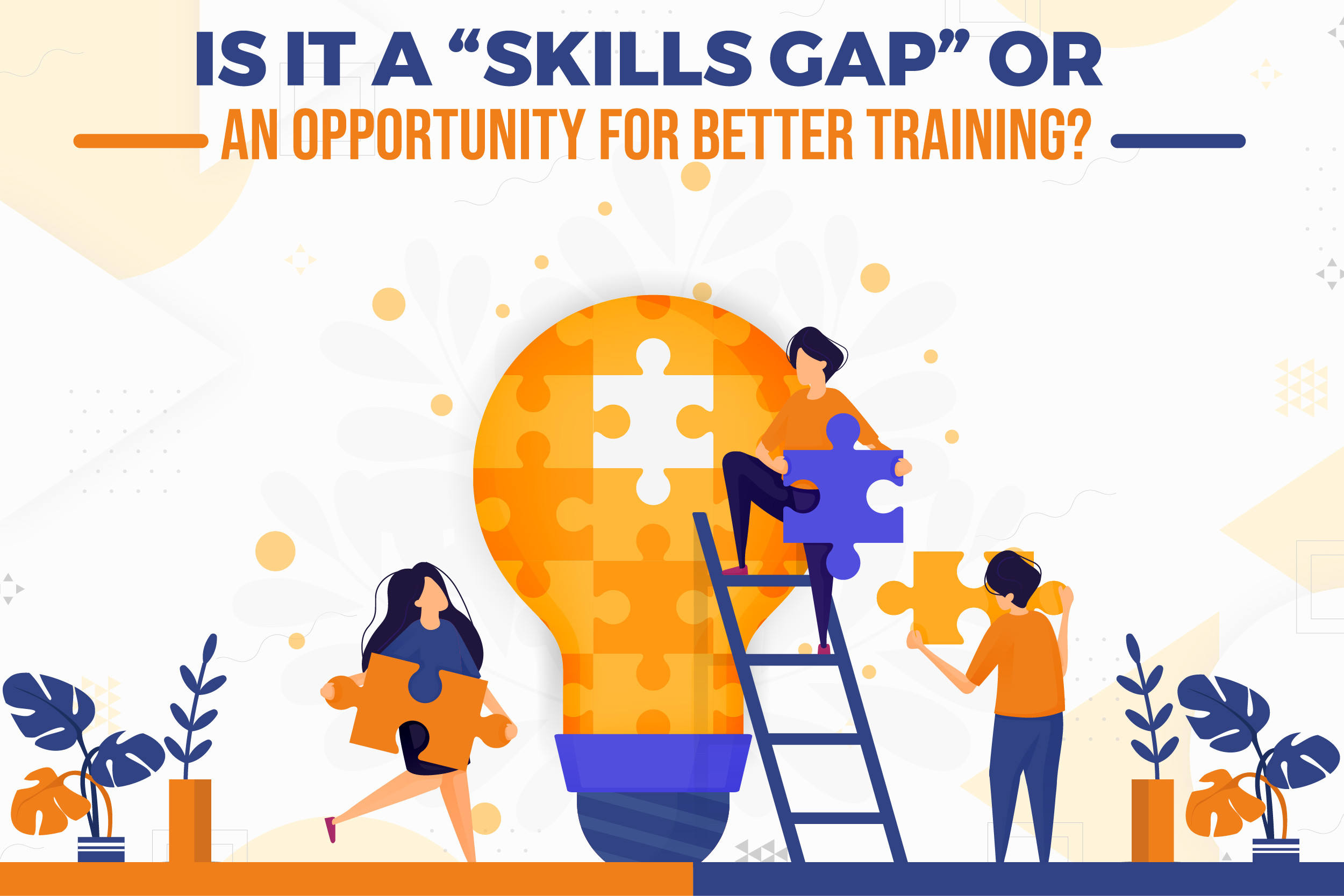
Is It A “Skills Gap” Or An Opportunity For Better Training?
Skills gaps were a major obstacle for enterprises to overcome in order to successfully adopt and advance ever-evolving technology before COVID-19 ever took effect. The skills gap issue is still a concern, as we are often told, and sadly, the pandemic made it much more obvious as firms had to relocate or shut down.
Over the past 18 months, there has been a significant impact on every sector, including education, retail, and hospitality. It has been found out that there isn't just a skills gap, but also a training gap, which presents opportunities for your company.
It is a common misconception that the educational system is to blame for the training shortage since it does not adequately prepare students for the commercial sector. Alternatively, L&D teams may come under fire for failing to offer enough training or the correct kind of material to teams across the business. It's time to let go of the notion that we must close the skills gap and instead see this as a chance to develop and invest in a diverse and inclusive talent pool with an emphasis on innovation, communication skills, and organizational development. Providing Leadership Training Programs for employees is also a great way to boost employee development and productivity.
People frequently struggled to obtain employment because they lacked the qualifications or necessary abilities for jobs in the "new economy." However, as the unemployment rate started to rise slowly, so did the requirements for various skill sets. Moreover, training existing employees in new skill sets can prove to be beneficial and cost-effective for the company as opposed to hiring new professionals having the same skill sets.
Skills Gap Or Lack Of Training
It’s a known fact that businesses all around the world are finding it difficult to stay up with recent technological breakthroughs. Increased skill requirements for employees are a result of this, but it also leads to higher unemployment and weaker economic development. Employees who are ill-equipped or underqualified frequently lose their jobs or are forced to quit by themselves, forcing businesses to acquire new personnel.
L&D teams throughout the world have had to cope with budget cuts, layoffs, high turnover, and many other undesirable circumstances when it comes to training. The reality is that most businesses do not include a skills development strategy in their training plans.
Many organizations cut back on expenditure and training due to the havoc caused by COVID-19. This must be avoided at all costs. The notion of organizations' inability to expand and the transition due to a lack of capabilities is outmoded now. In addition to employing diverse workers with a more comprehensive and disciplined approach, bridging skills gaps may begin within your business. When examining your training program and corporate goals, take into account the following:
- Employees have easy access to ongoing education and training.
- Your firm values include access to peer support groups and professional networks.
- There are in place diverse and equitable hiring, mentorship, and management processes.
- Employees are given career paths in high-quality job profiles.
- Despite the fact that it is a new field, there is room for advancement within the business.
Organizations are diverted from more effective methods of tackling skills, advancement, and innovation by the perception of skills shortage issues. Even though recruiting difficulties do occur, skills shortages are not frequently to blame for them. For instance, businesses that demand technological talents but do not explain exactly what they mean offer chances as well as mistakes. Vital ones like training on soft skills and Leadership Skills Training should be fully leveraged and made popular to permanently seal the skills gap. Although technical or functional knowledge is the main emphasis of most training nowadays, this training is also necessary.
Final Thoughts: Why Routine and Consistent Training Is Needed?
According to WEF's Future of Jobs Report for 2020, in the current corporate environment, there is less time to train and upskill your personnel. Organizations must give those who require training more assistance in light of the recent economic slump. 73% of businesses said they'll offer reskilling and upskilling chances by 2025 to support workers in doing their jobs appropriately and effectively. That means we can see more of such training like Leadership Programs and others in the near future.
Organizations must be mindful of "skilling" trends both at present and in the upcoming times if they want to future-proof their teams and remain competitive for top talent. It is crucial to develop your present staff today as the need for technological and data skills rises and the labor market remains tight.
Most businesses will benefit from educating current personnel as opposed to looking for high-paid new talent. In a strong employment market, it is crucial to continue working to grow your staff on a regular basis. Upskilling and reskilling for skills shortages are certainly necessary. Not just for their own benefit and professional development, but also the success of your company as a whole.
